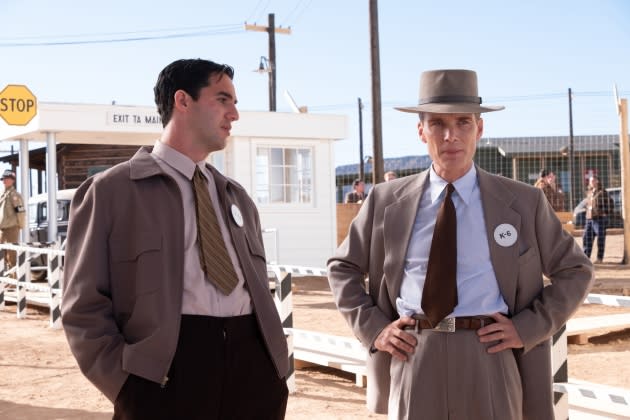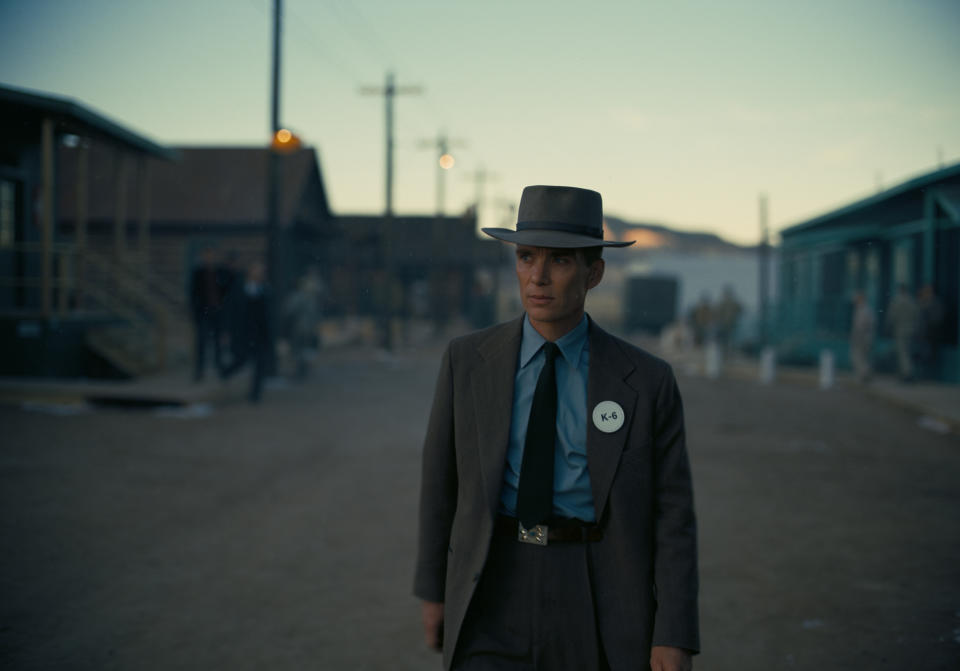‘Oppenheimer’ Costume Designer Ellen Mirojnick Talks Creating a Different Kind of Period Film

Christopher Nolan’s highly anticipated new film “Oppenheimer” is a different kind of period drama, one that’s more focused on the storyline told in a first-person narrative rather than emphasizing distinct periods of time.
Costume designer Ellen Mirojnick, who has worked on period projects such as “Bridgerton” and “The Greatest Showman,” was tasked with creating the costumes for the film’s star-studded cast, which includes the likes of Cillian Murphy, Robert Downey Jr., Matt Damon, Emily Blunt, Florence Pugh and others.
More from WWD
“Oppenheimer,” which debuts in theaters on Friday, tells the story of J. Robert Oppenheimer, the American physicist who was the director of the Los Alamos Laboratory during World War II — which took on the Manhattan Project — and is known as the “father of the atomic bomb.” The film follows Oppenheimer from the early 1920s through the 1960s and is mostly told from the character’s point of view.
Although the film spans decades, the costumes in “Oppenheimer” stay largely consistent throughout to stay focused on its first-person narrative.
“It was a very different approach,” Mirojnick said. “It wasn’t about [taking creative] liberties. It was about telling a cinematic story and creating a first-person point of view, which is a very different approach than doing a period piece with historical accuracy down to every last detail. It’s an approach that was a bit freer. It was very important to be able to move through the story and understand the passage of time without getting hung up on a very specific kind of period detail, which you do a lot of times in doing costumes for period films.”
Mirojnick explained that the costumes evolve in subtle ways throughout the film, particularly for the men’s suiting, to help show the passage of time without taking the viewer out of the immersive experience. She stated viewers can see the time changes through design elements like the color palette, fabrics and textures.
The film is primarily told through Oppenheimer’s point of view — with those scenes shot in color — but other portions are told through the point of view of Lewis Strauss, the chairman of the Atomic Energy Commission and Oppenheimer’s rival, who is played by Downey Jr. These scenes are depicted in black and white.
Mirojnick navigated the black-and-white scenes by focusing on textures and colors, either utilizing fabrics that popped on the screen or more subtle styles to have the silhouettes stand out.
For Oppenheimer’s character, Mirojnick largely stuck to a blue color palette and the same silhouette that subtly evolved over time. She explained that the character had a major shift in his costumes when he took on his role at Los Alamos, a shift that was meant to reflect the gravity of the position.

At this shift, the character took on a fuller silhouette for his suiting, looking to fuller pants and a fuller jacket. The main element of Oppenheimer’s new wardrobe was his signature soft-brimmed hat, which Mirojnick recreated with Hollywood hat maker Baron Hats.
“He is basically similar to a sheriff in his Western town that he builds,” Mirojnick said about the character’s transition. “Los Alamos was clearly a very significant place. It was a secret. No one knew that it existed and no one knew what work was taking place. When he walks out of his office, when he picks up his hat and his pipe and walks down the street — that man has become the man that we know of as Oppenheimer. He is strong, he is empowered, he is brilliant. He becomes I think the rock star at that moment in time as he begins his work that he was meant to do.”
While Mirojnick’s strategy was less focused on creating period costumes, she fully recreated Strauss’ Senate confirmation hearing look — a narrow pin-striped suit paired with a yellow tie with a dark blue stripe — despite the scene being filmed in black and white. This decision was to further evoke the character’s put-together nature and contrast it to Oppenheimer’s simpler wardrobe from his earlier years.
Overall, Mirojnick thinks taking a different approach to the period costumes helped further the story and keep the viewer immersed.
“It doesn’t feel like a ‘costumed film,’” she said. “I put quotes around the words ‘costumed film’ because it is so immersive. The film is an epic piece of cinema that really immerses you in the story that just takes you by your heart.”
Launch Gallery: A Closer Look at the Costumes in ‘Oppenheimer’
Best of WWD


